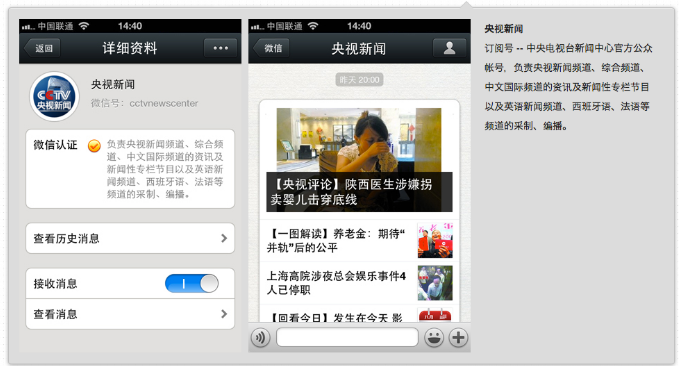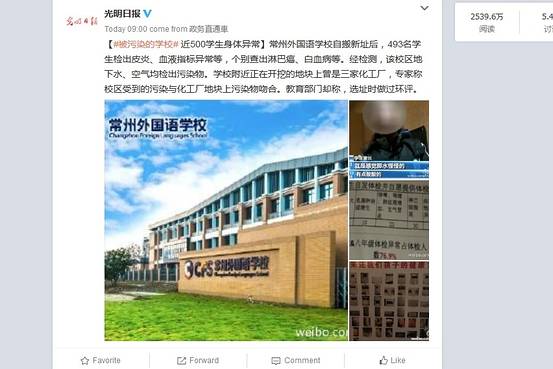In
a time of constant change, fierce competition and information overload, every
company is in need to check the relevant news about their industry and markets
on a regular basis, in order to keep up with the trends and make the right
decisions. The traditional sources in Western countries for this kind of news
are mostly news websites and industry-specific magazines, in combination with
social media channels and newsletters.
However,
while this might work well in Western countries, looking at China, media
regulations, an opaque market situation, and language barriers are adding quite
a few obstacles for international companies to stay updated. In addition to
that, social media platforms like WeChat and Weibo are changing how journalism
works in the country, dragging power away from national news agencies to
trusted opinion leaders with many followers. These independent influencers,
called Key Opinion Leaders, are attracting both attention and money in China’s
business environment.

Popular
social media and messaging apps of the Western world are blocked in China.
Facebook and Twitter are famous examples of blocked social media channels, as
WhatsApp represents a restricted messenger. All have fallen foul of China’s
myriad of extreme regulations on censorship and data collection.
However,
that doesn’t mean that Chinese companies are not building an audience online
and posting regular updates on their business and innovations. Just like
Western companies are commonly represented on the online channels, their
Chinese counterparts are equally active on the Chinese social media platforms.
For
any international players that are investing and doing business in China,
getting access to the press releases and social media posts of Chinese
companies can be a game changer to learn about their strategy, business
development, and investment scopes. In a time, where data and timely
information can be the difference between leading and following a business
trend, having the right sources for news is crucial.
After
all, social media is interlaced into nearly every aspect of life for people
around the world. In China, WeChat and Weibo social media have become the
backbone of everything for Chinese digital natives. International players in
the Chinese market should know about these leading news sources for updates on
the Chinese market and how they work in general.
WeChat
WeChat
is a Chinese multi-purpose social media mobile app developed by tech giant
Tencent. Starting in 2011, the app has grown to be one of the largest
standalone mobile apps in 2017 with over 980 million monthly active users, most
of them from Mainland China.
According
to data from the company, about 41% of the total population of China logging
into WeChat every day, using the various functions for daily tasks. As a
result, WeChat is taking over China in both social and commercial aspects. It
has grown into the largest and the most influential social network in China.
The
app supports companies and organizations that wish to register as an official
account, which enables them to push feeds to and interact with subscribers.
Using WeChat’s official account, companies can choose between three types of
official accounts, namely a service account, a subscription account and an
enterprise account.
By
the end of 2014, the number of WeChat official accounts had reached 8 million.
Official accounts of organizations can apply to be verified. WeChat has been
used by Chinese companies as part of a social media digital marketing strategy,
to share information and boost their brands.
According
to the latest data, one-fifth of all Chinese companies have a WeChat account.
That is 5.8 million accounts, a number that even keeps growing every day.
The
most important function for enterprises to promote their content and press
releases on WeChat is the section called “Moments”. This is WeChat's brand name
for its social feed of friends and subscribers’ updates. The content that can
be posted in the Moments section contains images, post text, post comments,
share music, share articles and post "likes."

WeChat
also offers the possibility to post promoted advertisements in the news feed.
These are advertisements that are displayed in user's Moments. A WeChat Moments
advertisement includes brand name, profile, short description, a maximum of six
pictures or a six to 15 seconds short video, as well as a link to a webpage
hosted on Tencent's server. Moments ads are like regular Moments post but with
a sponsored tag. Users can interact with the ads: they can like and comment on
the post.
Like
Facebook, Twitter and LinkedIn, brands can place sponsored content in Moments’
timeline. Tencent didn’t open Moments to advertisers until January of 2015 when
it unveiled Sponsored Moments. WeChat selected around 50 brand advertisers for
the initial trial, including Coca-Cola and BMW.
Compared
with Facebook and other social media, WeChat allowed businesses to open an
account and gain a following on the platform for free. Businesses could send
messages to the followers and get frequently links with them.
Weibo
Weibo
is the Chinese equivalent to Twitter, surpassing it by numbers of users in
2017. Weibo is a microblogging website, used by about one-third of China’s
total internet users on a regular basis. According to the company’s data,
around 100 million messages are posted each day on the website.
More
than 5,000 Chinese companies and 2,700 media organizations in China are
actively using Sina Weibo and the number is growing.
Facing
no real international competition in blogging services, Sina Weibo implements
many features from Twitter. Users of Weibo used to have a 140-character limit,
they mention or talk to other people using @, add hashtags with
"#subject#", as well as follow other users to make their posts appear
in one's own timeline. In the beginning of 2016, Sina Weibo decided to remove
the 140-character limit for any original posts, reacting on the demand from
users to see more quality content and deeper information in the posts.
But
Sina Weibo is more than just a blogging website. It can be better described as
a combination of Twitter, Facebook, Pinterest, and Tumblr. The users of Weibo
interact much more with each other than the users of Twitter do. Many topics
that go viral on Weibo also started from the platform itself, while Twitter
topics often come from the news or events that take place on Twitter.

Nowadays,
Weibo has developed steadily to become a significant part of Chinese
enterprises to stay engaged with their followers and post regular press
releases and promotions. Similar to most social media channels, enterprises
also can choose in Weibo to create an official company account over an ordinary
account, opening more opportunities to track their campaigns.
Social-media-related corporations and entrepreneurs use Weibo to reach out to
their audience and clients.
The
main activities for companies on Weibo include explore business opportunities
and build meaningful contacts on Weibo, introduce their products and services
to Chinese consumers, easily collect customer feedback and respond to their
questions, and create experiences that enhance brand awareness and brand
affinity.
The easy solution for
automatic updates
Most
Chinese rely on WeChat and Weibo for their daily news, since they trust these
sources more than the highly regulated and manipulated governmental news
agencies. Hence, Chinese companies are aware of the preferences and post their
updates preferably on these platforms as well, leading to a large number of
company updates.
Foreign
enterprises, that have access to the regular updates of their Chinese partner
or competitors, suppliers or buyers, can use the information to stay informed
about the trend in China immediately from the source without having to wait for
some public news if the topic is covered at all.
CCM
has developed a new tool to get all relevant news and updates from Chinese
enterprises and key opinion leaders on social media right to the email address.
Users can simply set the relevant keywords and enterprises they want to follow
in the Crawling System of CCM. The system will crawl all relevant posts on
WeChat and Weibo, either from the selected enterprises or by the selected
keyword. The posts will be filtered for relevance automatically and send to the
email address of the user directly. An integrated translation service can be
used to translate the Chinese news into English.
Learn
more about the Crawling Center of CCM and apply for a free trial by visiting
our online platform or contact us directly at econtact@cnchemicals.com and
call 86-20-37616606.
CCM
is China’s leading market and business intelligence provider for the fields of agriculture, chemicals, food and feed.